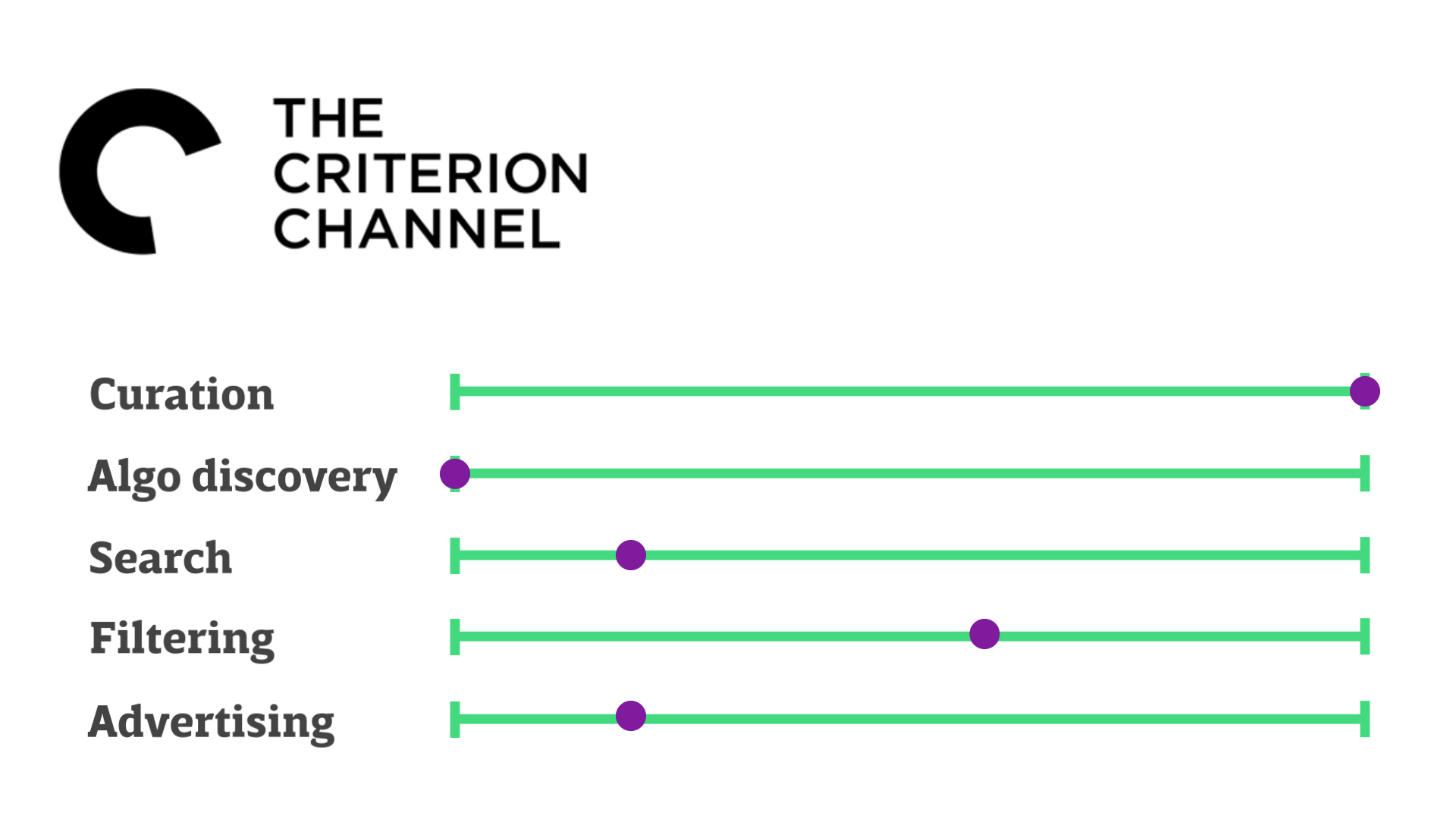This essay originally was published on September 16, 2021, with the email subject line CT No. 95: "No algorithms for the cinemaphile."
The times we are living in are not streaming wars; it's unethical and inaccurate to describe these hastily produced entertainment portals as weapons or anything more than yet another bid for an audience's time and attention.
Tv-on-demand services are plentiful and constantly trying to flag down our attention via tv ads, social ads, billboards, promotions. Powered by Hollywood's priorities of intellectual property rather than Silicon Valley's focus on user experience and innovation, the shifts in smart tv interfaces are palpably different than those on a desktop.
The rubric
Following the lead of Netflix, Hulu and Amazon, streaming TV services follow several conventions for new content discovery:
- Curation: Themed content served in collections, clearly selected and prioritized by humans at some point.
- Algorithmic/personalized discovery: Content is prioritized based on previous interactions with individual preferences saved in a profile. Interactions can be passive (watching certain types of content; indicating gender or age when creating a profile) or active (rating contents or selecting favorites when creating a profile).
- Search: Content is prioritized based on matches with search terms
- Filtering: Content searches are filtered based on metadata preferences (i.e., tv shows vs. movies, comedy vs. romance)
- Advertising: Content is surfaced based on a service's/studio's purchased advertising or marketing plan, usually indistinct from algorithmic curation.
For these reviews of streaming service UIs, I'll rate content discovery on the above, as well as the general aesthetic and my experience with interactivity/speed/usability. Keep in mind that every service's performance also depends on your local internet type/speed, the device on which you're watching, etc. I've evaluated these services through their apps on either my Apple TV or my Vizio, with occasional desktop or other smart tv interactions.
Focus on film: Streaming cinema on demand
Call me old-fashioned: even in the age of prestige tv, I still like movies best. They're over in a couple of hours and, when they're good, offer a clear vision of a slice of life or complex story without overburdening the viewer. Films strike the balance between auteur and collaborative and rarely have bandwidth to jump the shark. It's a preference; but I like sitting down for two hours in someone else's world, and when I'm done, I can taste the residue of story well told or a brilliantly executed idea.
The current crop of film-first streaming services cater to viewers who prefer curation over algorithmic selection, displaying a defined taste with only a hint of snobbery.
The Criterion Channel: Plenty of taste, but never too much

When friends tell me they are bored with TV (I get it; me too), I tell them to check out the Criterion Channel. Criterion's unique in the film industry, a company steadfastly devoted to curation, even when its integration with services like Hulu and Filmstruck faltered in the past. The Criterion Channel and the Criterion Collection are different facets of the same brand; the Channel includes a good chunk of the Collection's Best Arty Films Ever, along with other independent classics and restorations.



